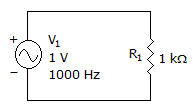Discussion
Home ‣ Electronics ‣ Measurement, Conversion and Control Comments
- Question
Temperature sensing can be achieved by the use of
Options- A. thermocouples
- B. RTDs
- C. thermistors
- D. All of the above
- Correct Answer
- All of the above
- 1. The connections to a thermocouple
Options- A. can produce an unwanted thermocouple effect, which must be compensated for
- B. produce an extra desirable thermocouple effect
- C. must be protected, since high voltages are present
- D. produce an extra desirable thermocouple effect and must be protected, since high voltages are present Discuss
- 2. The output voltage of a typical thermocouple is
Options- A. less than 100 mV
- B. greater than 1 V
- C. Thermocouples vary resistance, not voltage.
- D. None of the above Discuss
- 3. The silicon-controlled rectifier can be turned off
Options- A. by a negative gate pulse
- B. by forced commutation
- C. with the off switch
- D. when the breakover voltage is exceeded Discuss
- 4. RTDs are typically connected with other fixed resistors
Options- A. in a pi configuration
- B. in a bridge configuration
- C. and variable resistors
- D. and capacitors in a filter-type circuit Discuss
- 5. What is the zero-voltage switch used for?
Options- A. To reduce radiation of high frequencies during turn-on of a high current to a load
- B. To control low-voltage circuits
- C. To provide power to a circuit when power is lost
- D. For extremely low-voltage applications Discuss
- 6. A sine wave has:
Options- A. four quadrants
- B. two alternations
- C. one period
- D. all of the above Discuss
- 7. What is the waveform period difference between the 60 Hz electricity used in this country and the 50 Hz used in Europe?
Options- A. 3 ms
- B. 16 ms
- C. 4 ms
- D. 20 ms Discuss
- 8. The current is flowing in what direction?

Options- A. clockwise
- B. counterclockwise
- C. in both directions at the same time
- D. 50% of the time clockwise and 50% of the time counterclockwise Discuss
- 9. What are the two main applications for ac?
Options- A. direct, pulsating
- B. electric, magnetic
- C. power, information
- D. static, dynamic Discuss
- 10. The phase difference between sine waves of different frequencies is:
Options- A. equal to their frequency differences
- B. the difference in their fixed time displacement
- C. the same throughout time
- D. constantly changing Discuss
Measurement, Conversion and Control problems
Search Results
Correct Answer: can produce an unwanted thermocouple effect, which must be compensated for
Correct Answer: less than 100 mV
Correct Answer: by forced commutation
Correct Answer: in a bridge configuration
Correct Answer: To reduce radiation of high frequencies during turn-on of a high current to a load
Correct Answer: all of the above
Correct Answer: 3 ms
Correct Answer: 50% of the time clockwise and 50% of the time counterclockwise
Correct Answer: power, information
Correct Answer: the difference in their fixed time displacement
Comments
There are no comments.More in Electronics:
Programming
Copyright ©CuriousTab. All rights reserved.
